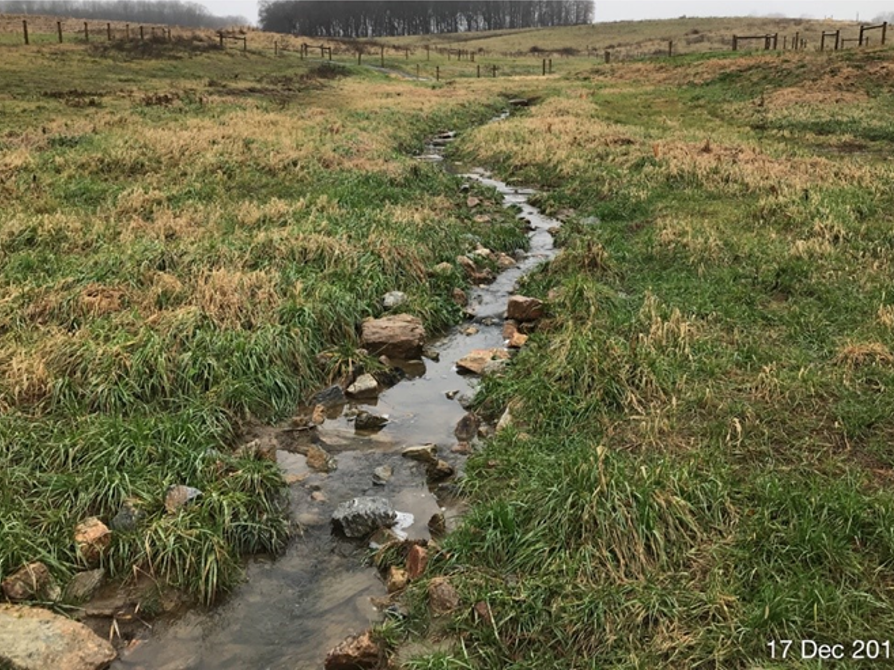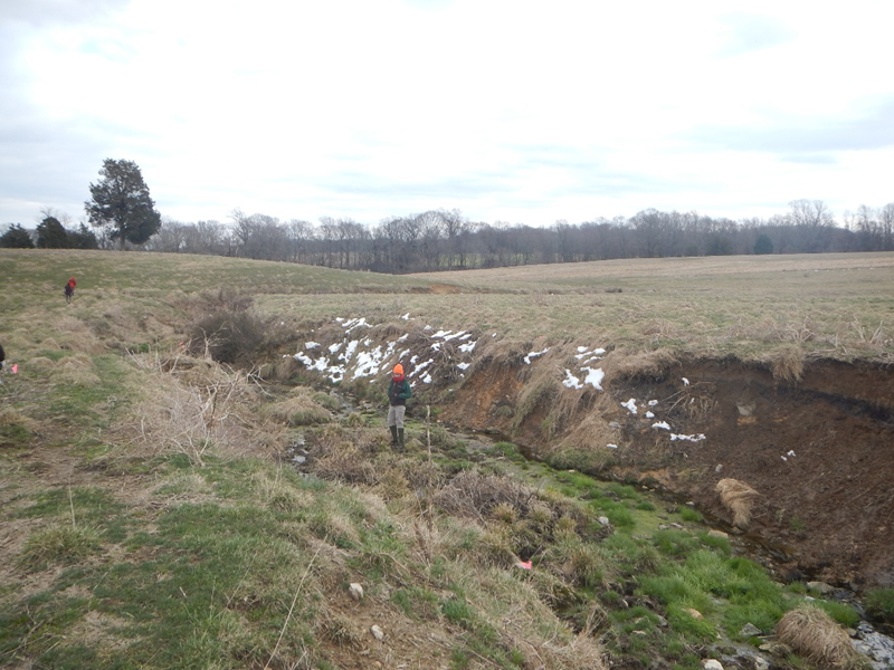WSSI is restoring over 38,000 linear feet of Little Elk Creek and 14,000 linear feet of Little Northeast Creek and combined planting over 100 acres of riparian buffer to provide Maryland Department of Transportation (MDOT) State Highway Administration (SHA) with Chesapeake Bay TMDL credit to meet their MS4 permit requirements. The total conservation easement area exceeds 150 acres.
The Challenge
After years of stream degradation from agricultural impacts, WSSI took on task of assessing, designing, and permitting the process to return these streams to a healthy state.
Our Solution
WSSI led the assessment and design processes for this project, coordinated all regulatory aspects and procured permits, and is providing full-time construction oversight. We obtained U.S. Army Corps of Engineers, Maryland Department of the Environment, and Cecil County permit approvals – including E&S control plans – and the project was designed and permitted with local, state, and federal regulatory agencies in less than a year.
The projects include restoration of both the main stems of Little Elk and Little Northwest Creeks, along with tributaries. Drainage areas range from 3 acres up to 9,000 acres (14 square miles). During the initial assessment we conducted stream and watershed assessments to establish baseline conditions in terms of the Stream Functions Pyramid, and to determine the TMDL pollutant removal credit using the Chesapeake Stormwater Network’s Recommendations of the Expert Panel to Define Removal Rates for Individual Stream Restoration Projects and MDE Wasteload Allocation Guidelines. Assessments included watershed analysis (review of historic and current aerial photography, current and future zoning, curve number analysis, and impervious cover analysis), EPA rapid bioassessment, and BANCS assessment.
We also conducted geomorphic surveys, stream classification, and sediment analysis (collecting samples and testing for Total Nitrogen, Total Phosphorus, and bulk density), and then developed full stream restoration construction plan sets based on Natural Channel Design principles. Design included reinforced riffles for grade control to raise the channels to access adjacent floodplain. Structures in the large channels included rock or log sills with woody toe revetments with some log vanes to support pools. Smaller streams included cross vanes, j hooks, and woody toe. Steeper tributaries with step pool complex were restored with rock or log steps. Where necessary, livestock exclusion fencing was installed to protect the stream and riparian areas.
We conducted several studies to support stream restoration design, including an existing conditions site survey (infrastructure, stream thalweg, and cross sections), wetland and stream delineation, survey, and jurisdictional determination procurement, and rare, threatened, and endangered species investigations. Due to likelihood that the federally endangered bog turtle is present at the site, we coordinated with Maryland Department of Natural Resources to ensure a take did not occur. We also prepared and recorded all perpetual conservation easements (to SHA standards) for the restoration area. We provided full-time construction oversight, construction stakeout, and as-built survey during construction, and performed five years of post-construction monitoring.
During the two years of construction WSSI provided full-time onsite construction oversight, coordinated subcontractors, and maintained the project schedule and budget. WSSI inspected streams after severe storms (including Hurricane Isaias (2020) and Tropical Storm Ida (2021)) during construction and five years post-construction, to assess damage, prepare repair plans, coordinate permits, and assist with implementation.
Adaptative management strategies varied from replanting stream bank or riparian areas to regrading banks and adjusting structures. A successful strategy implemented was the use of woody toe with soil lifts. Riparian areas outside livestock exclusion fence with highly impacted from deer-browse and beaver activity. To help these areas, some existing plants were protected with shelters and supplemented with a new, larger stock species with shelters. We also experimented with some beaver deterrent paint on select stream side willows. WSSI has successfully completed the post construction monitoring requirements with all permitting agencies and now is in the handover process with SHA.


Project Facts
- Owner
Ecosystem Investment Partners, Maryland Department of Transportation State Highway Administration - Location
Cecil County, MD - Size
38,000 linear feet of Little Elk Creek and 14,000 linear feet of Little Northeast Creek

